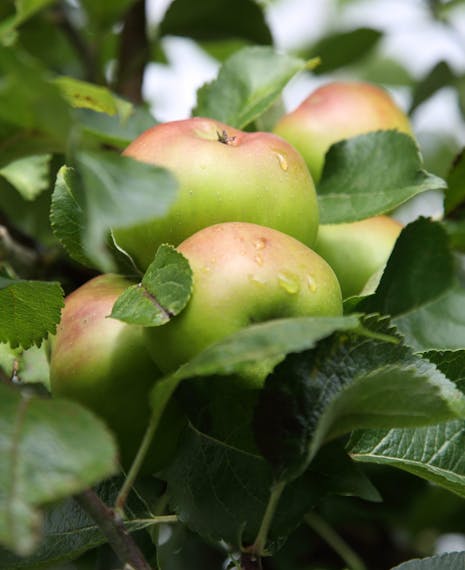Enjoy this indulgent cake with friends and family
This is a firm favourite of guests on our courses and in the holiday lets. We adapted an Ottolenghi recipe from one of favourite books (we ended up getting copies for the shop here since we rave about it so much!)
The cake freezes really well before it is iced - so you can make the most of rainy days and darker nights and get batch baking.
Makes 1 large cake to feed a crowd



80g dried fruit: sultanas/raisins/cranberries
60ml water
160g caster sugar
120g extra virgin olive oil (Aldi’s Puglian is fab!)
2 medium free-range eggs (beaten), plus 2 egg whites for later
1/2 fresh vanilla pod or 1/2tsp. vanilla extract
1 lemon, grated zest
3-4 cooking apples (depending on size/variety), peeled and diced
285g self-raising flour
1/2tsp. ground cinnamon
essential icing:
100g softened unsalted butter
100g light brown Muscovado sugar
85g maple syrup
250g Mascarpone cheese
Line the base of a 20cm spring form tin, and grease the sides. Preheat oven to 170 deg C. Place the dried fruit in a small saucepan with the water and simmer until the water has been absorbed – leave to cool in a bowl (or you can do this step the night before by simply placing teh fruit in hot water). Place olive oil and sugar in a mixer and beat slowly until thick and creamy, then slowly add the 2 whole beaten eggs slowly (the extra egg whites are for later!). Add the seeds from 1/2 vanilla pod and then fold in the fruit, lemon zest and apples. Sift in the flour and cinnamon and fold gently until combined. Whisk the extra 2 egg whites with a pinch of salt until stiff then folld gently into the batter – do this in 2 halves to end up with a lighter cake. Pour into the lined tin and bake for 1 hour – then test with a skewer. If the cake needs longer then reduce the oven temp to 160 deg C and bake until the skewer comes out clean.
Leave to cool in the tin. Meanwhile beat the butter, mascarpone sugar and maple syrup together until light and fluffy, quickly beat in the cream cheese. Slice the cake in 2 and ice with the decadent, but essential, topping.
For our TOP TIPS see slides below.








